Telescope
A telescope is an optical instrument that uses lenses or mirrors to gather and focus light, allowing for the observation of distant objects. Telescopes are commonly used in astronomy to observe celestial bodies such as stars, planets, and galaxies, but they can also be used for terrestrial viewing.
Parts of a Telescope
- Objective Lens or Primary Mirror: This is the main light-gathering element of the telescope. In refracting telescopes, the objective lens gathers and refracts light, while in reflecting telescopes, the primary mirror reflects light to form an image.
- Eyepiece: The eyepiece is the lens or group of lenses that magnifies the image created by the objective lens or primary mirror. It is where the observer looks to see the final magnified image.
- Tube: The tube houses the optical elements of the telescope and provides a structure for alignment and support.
- Mount: The mount is the support structure for the telescope, allowing it to be pointed and moved to track objects in the sky.
Types of Telescopes
There are several types of telescopes, including:
- Refracting Telescopes: These telescopes use lenses to refract and focus light to form an image. The iconic long, slender design of a refracting telescope is often associated with early astronomical observations.
- Reflecting Telescopes: Reflecting telescopes use mirrors to reflect and focus light to form an image. This design is commonly used in modern astronomical observatories.
- Compound Telescopes: Compound telescopes combine lenses and mirrors to form an image, providing the benefits of both refracting and reflecting elements.
- Catadioptric Telescopes: These telescopes use a combination of lenses and mirrors to form an image, often in a more compact and versatile design.
Using a Telescope
When using a telescope, it's important to consider factors such as:
- Focusing: Adjusting the focus of the telescope to bring distant objects into clear view.
- Tracking: Following the motion of celestial objects as the Earth rotates, or using motorized mounts to track objects automatically.
- Observing Conditions: Considering factors such as light pollution, atmospheric turbulence, and weather conditions that can affect viewing quality.
Study Guide
Here are some key points to focus on when studying telescopes:
- Identify and describe the main parts of a telescope, including the objective lens or primary mirror, eyepiece, tube, and mount.
- Compare and contrast the different types of telescopes, including refracting, reflecting, compound, and catadioptric designs.
- Explain how a telescope is used to observe celestial objects, including the process of focusing, tracking, and considering observing conditions.
- Discuss the historical significance of telescopes in astronomy and the impact of telescopic observations on our understanding of the universe.
By understanding the principles and applications of telescopes, you can gain a deeper appreciation for the role of these instruments in exploring the cosmos.
.◂Science Worksheets and Study Guides Second Grade. Science in our world
Study Guide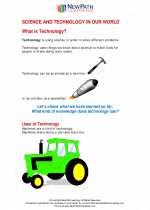 Science in our world
Science in our world  Worksheet/Answer key
Worksheet/Answer key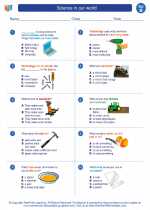 Science in our world
Science in our world  Worksheet/Answer key
Worksheet/Answer key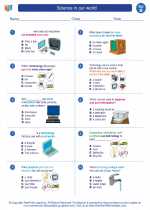 Science in our world
Science in our world  Worksheet/Answer key
Worksheet/Answer key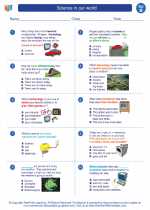 Science in our world
Science in our world  Vocabulary/Answer key
Vocabulary/Answer key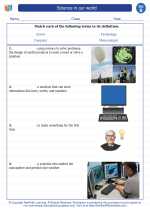 Science in our world
Science in our world 

 Worksheet/Answer key
Worksheet/Answer key
 Worksheet/Answer key
Worksheet/Answer key
 Worksheet/Answer key
Worksheet/Answer key
 Vocabulary/Answer key
Vocabulary/Answer key

The resources above cover the following skills:
LIFE SCIENCE (NGSS)
Biological Evolution: Unity and Diversity
Students who demonstrate understanding can:
Make observations of plants and animals to compare the diversity of life in different habitats[Clarification Statement: Emphasis is on the diversity of living things in each of a variety of different habitats.] [Assessment Boundary: Assessment does not include specific animal and plant names in specific habitats.]